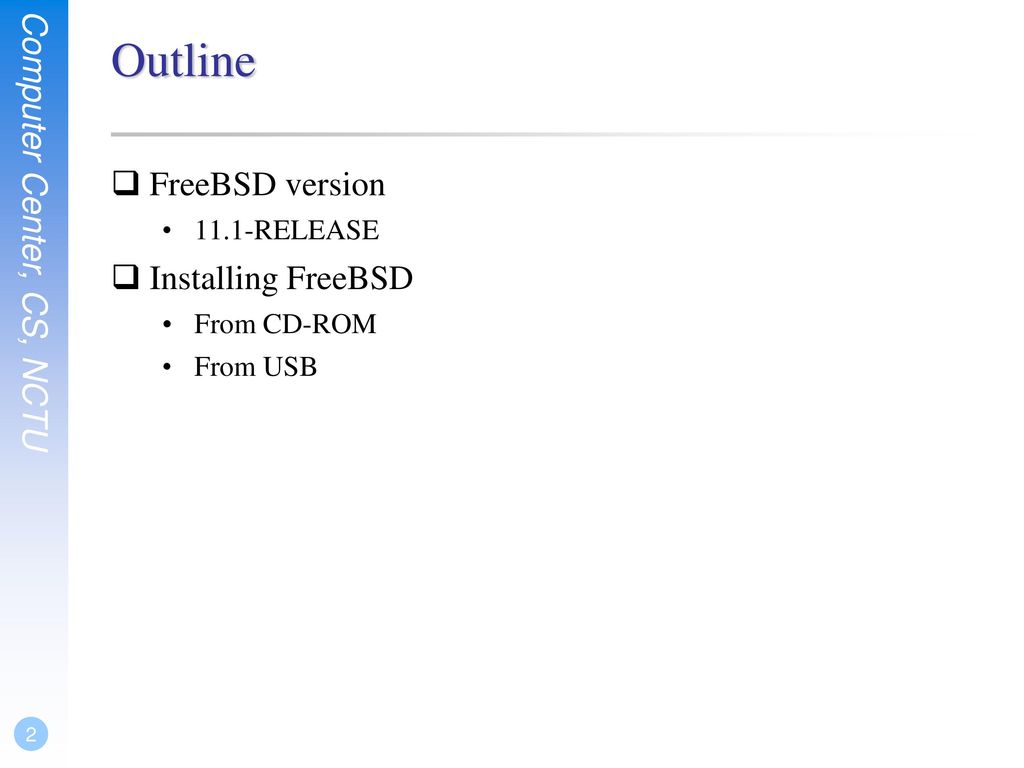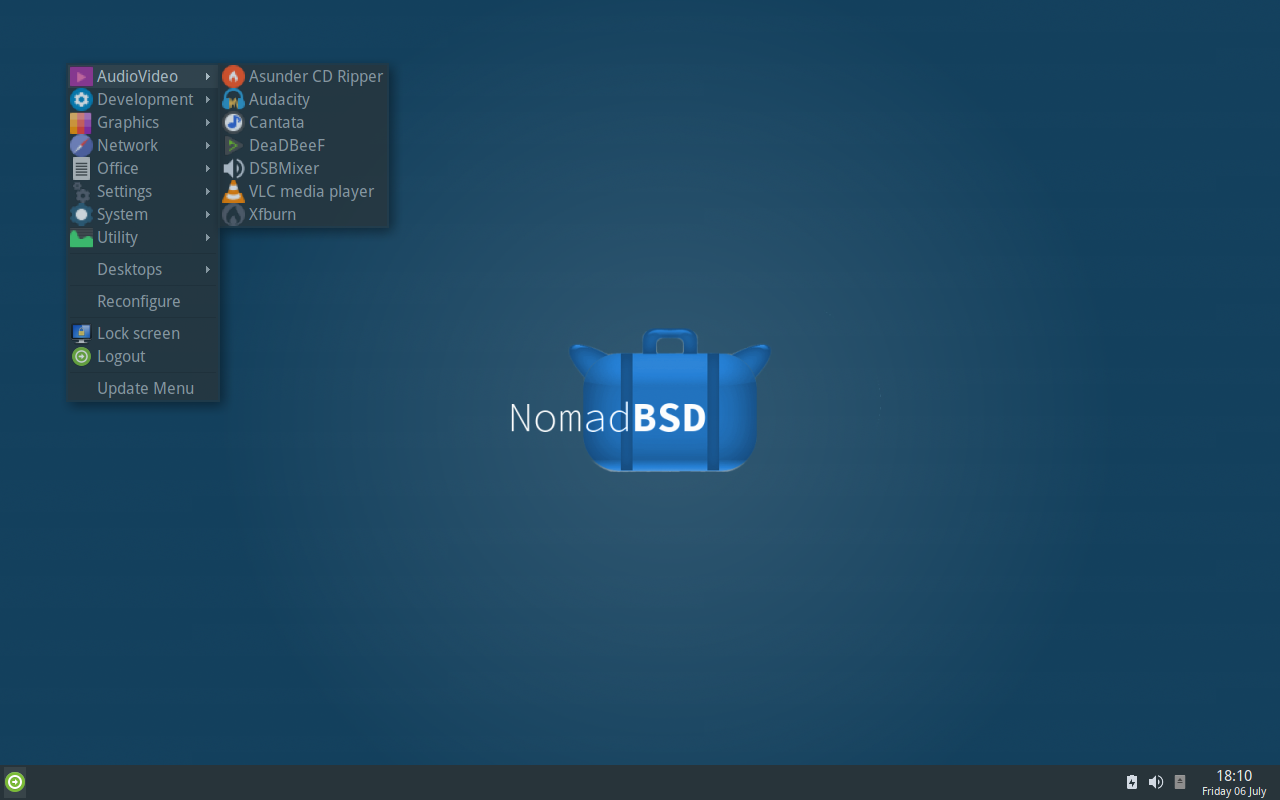Flash OS images to SD cards & USB drives, safely and easily. Etcher is a powerful OS image flasher built with web technologies to ensure flashing an SDCard or USB drive is a pleasant and safe experience. It protects you from accidentally writing to your hard-drives, ensures every byte of data was written correctly and much more. To burn the image using dd, insert the USB stick and determine its device name. Then, specify the name of the downloaded installation file and the device name for the USB stick. This example burns the amd64 installation image to the first USB device on an existing FreeBSD system. Aug 06, 2016 Unsupported image with FreeBSD ISO #809. Closed wbsdty331 opened this issue Aug 6, 2016 12 comments Closed. But a lot of users don't understand why they should have to use a different image file for optical and USB boot, especially when 99% of Linux ditro ISOs can be easily converted to bootable USB.
@pbatard I am having the same problem. You will have no demand for FreeBSD support because you do not support it. There will simply be occasional people who bother making issue reports. :)
I find it kind of ignorant to tell that FreeBSD people do something different and they must fix it. If you have an ISO file which is standards based and you can write it to a CD and your BIOS can boot it and it works. There is no other restriction. Then how can you blame FreeBSD people for doing something wrong? Also, do you blame Linux people for creating extra work for you because they do something different than Microsoft? These are different operating systems, lets be reasonable.
Thats said the .img files can be written directly to usb drives. Here is the mailing post and the conversion info about them:
https://lists.freebsd.org/pipermail/freebsd-stable/2009-March/048762.html
But perhaps it is best to hint to user that they should use the img file ?
@wbsdty331 you can use the .img file from freebsd downlods with win32diskimager
Once it has been determined that the system meets the minimum hardware requirements for installing FreeBSD, the installation file should be downloaded and the installation media prepared. Before doing this, check that the system is ready for an installation by verifying the items in this checklist:

Back Up Important Data
Before installing any operating system, always backup all important data first. Do not store the backup on the system being installed. Instead, save the data to a removable disk such as a USB drive, another system on the network, or an online backup service. Test the backup before starting the installation to make sure it contains all of the needed files. Once the installer formats the system's disk, all data stored on that disk will be lost.
Decide Where to Install FreeBSD
If FreeBSD will be the only operating system installed, this step can be skipped. But if FreeBSD will share the disk with another operating system, decide which disk or partition will be used for FreeBSD.
In the i386 and amd64 architectures, disks can be divided into multiple partitions using one of two partitioning schemes. A traditional Master Boot Record (MBR) holds a partition table defining up to four primary partitions. For historical reasons, FreeBSD calls these primary partition slices. One of these primary partitions can be made into an extended partition containing multiple logical partitions. The GUID Partition Table (GPT) is a newer and simpler method of partitioning a disk. Common GPT implementations allow up to 128 partitions per disk, eliminating the need for logical partitions.
Warning:
Some older operating systems, like Windows® XP, are not compatible with the GPT partition scheme. If FreeBSD will be sharing a disk with such an operating system, MBR partitioning is required.
The FreeBSD boot loader requires either a primary or GPT partition. If all of the primary or GPT partitions are already in use, one must be freed for FreeBSD. To create a partition without deleting existing data, use a partition resizing tool to shrink an existing partition and create a new partition using the freed space.
A variety of free and commercial partition resizing tools are listed at http://en.wikipedia.org/wiki/List_of_disk_partitioning_software. GParted Live (http://gparted.sourceforge.net/livecd.php) is a free live CD which includes the GParted partition editor. GParted is also included with many other Linux live CD distributions.
Warning:
When used properly, disk shrinking utilities can safely create space for creating a new partition. Since the possibility of selecting the wrong partition exists, always backup any important data and verify the integrity of the backup before modifying disk partitions.
Disk partitions containing different operating systems make it possible to install multiple operating systems on one computer. An alternative is to use virtualization (Chapter 21, Virtualization) which allows multiple operating systems to run at the same time without modifying any disk partitions.
Collect Network Information
Some FreeBSD installation methods require a network connection in order to download the installation files. After any installation, the installer will offer to setup the system's network interfaces.
If the network has a DHCP server, it can be used to provide automatic network configuration. If DHCP is not available, the following network information for the system must be obtained from the local network administrator or Internet service provider:
IP address
Subnet mask
IP address of default gateway
Domain name of the network
IP addresses of the network's DNS servers
Check for FreeBSD Errata
Although the FreeBSD Project strives to ensure that each release of FreeBSD is as stable as possible, bugs occasionally creep into the process. On very rare occasions those bugs affect the installation process. As these problems are discovered and fixed, they are noted in the FreeBSD Errata (https://www.freebsd.org/releases/12.0R/errata.html) on the FreeBSD web site. Check the errata before installing to make sure that there are no problems that might affect the installation.
Information and errata for all the releases can be found on the release information section of the FreeBSD web site (https://www.freebsd.org/releases/index.html).
The FreeBSD installer is not an application that can be run from within another operating system. Instead, download a FreeBSD installation file, burn it to the media associated with its file type and size (CD, DVD, or USB), and boot the system to install from the inserted media.
FreeBSD installation files are available at www.freebsd.org/where.html#download. Each installation file's name includes the release version of FreeBSD, the architecture, and the type of file. For example, to install FreeBSD 10.2 on an amd64 system from a DVD, download FreeBSD-10.2-RELEASE-amd64-dvd1.iso, burn this file to a DVD, and boot the system with the DVD inserted.
Freebsd Usb Wifi
Installation files are available in several formats. The formats vary depending on computer architecture and media type.

Additional installation files are included for computers that boot with UEFI (Unified Extensible Firmware Interface). The names of these files include the string uefi.
File types:
-bootonly.iso: This is the smallest installation file as it only contains the installer. A working Internet connection is required during installation as the installer will download the files it needs to complete the FreeBSD installation. This file should be burned to a CD using a CD burning application.-disc1.iso: This file contains all of the files needed to install FreeBSD, its source, and the Ports Collection. It should be burned to a CD using a CD burning application.-dvd1.iso: This file contains all of the files needed to install FreeBSD, its source, and the Ports Collection. It also contains a set of popular binary packages for installing a window manager and some applications so that a complete system can be installed from media without requiring a connection to the Internet. This file should be burned to a DVD using a DVD burning application.-memstick.img: This file contains all of the files needed to install FreeBSD, its source, and the Ports Collection. It should be burned to a USB stick using the instructions below.-mini-memstick.img: Like-bootonly.iso, does not include installation files, but downloads them as needed. A working internet connection is required during installation. Write this file to a USB stick as shown in Section 2.3.1.1, “Writing an Image File to USB”.
After downloading the image file, download CHECKSUM.SHA256 from the same directory. Calculate a checksum for the image file. FreeBSD provides sha256(1) for this, used as sha256 . Other operating systems have similar programs.imagefilename
Compare the calculated checksum with the one shown in CHECKSUM.SHA256. The checksums must match exactly. If the checksums do not match, the image file is corrupt and must be downloaded again.
The *.img file is an image of the complete contents of a memory stick. It cannot be copied to the target device as a file. Several applications are available for writing the *.img to a USB stick. This section describes two of these utilities.
Important:
Before proceeding, back up any important data on the USB stick. This procedure will erase the existing data on the stick.
Warning:
Freebsd Usb Image
This example uses /dev/da0 as the target device where the image will be written. Be very careful that the correct device is used as this command will destroy the existing data on the specified target device.
The dd(1) command-line utility is available on BSD, Linux®, and Mac OS® systems. To burn the image using
dd, insert the USB stick and determine its device name. Then, specify the name of the downloaded installation file and the device name for the USB stick. This example burns the amd64 installation image to the first USB device on an existing FreeBSD system.If this command fails, verify that the USB stick is not mounted and that the device name is for the disk, not a partition. Some operating systems might require this command to be run with sudo(8). The dd(1) syntax varies slightly across different platforms; for example, Mac OS® requires a lower-case
bs=1m. Systems like Linux® might buffer writes. To force all writes to complete, use sync(8).
Warning:
Freebsd Usb Creator
Be sure to give the correct drive letter as the existing data on the specified drive will be overwritten and destroyed.
Obtaining Image Writer for Windows®
Image Writer for Windows® is a free application that can correctly write an image file to a memory stick. Download it from
https://sourceforge.net/projects/win32diskimager/and extract it into a folder.Writing the Image with Image Writer
Double-click the Win32DiskImager icon to start the program. Verify that the drive letter shown under
Deviceis the drive with the memory stick. Click the folder icon and select the image to be written to the memory stick. Click to accept the image file name. Verify that everything is correct, and that no folders on the memory stick are open in other windows. When everything is ready, click to write the image file to the memory stick.
Freebsd Os Images
You are now ready to start installing FreeBSD.



